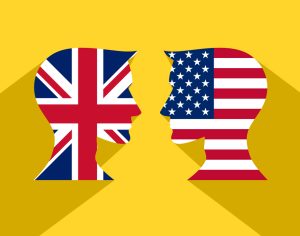Arne Mielken of Customs Manager Ltd says UK hopes of joining a free trade alliance of Pacific Ocean nations could be a game-changer for British exporters if the US re-joins the club.
Hopes of an early trade deal between the UK and US may have faded now that we are several months into a new American administration.
But Britain’s bid to join the Comprehensive and Progressive Trans-Pacific Partnership (CPTPP) could lead to a potentially lucrative UK-US trade deal by the back door.
The UK has started negotiations to join the free trade alliance of 11 Pacific Rim nations in a bid to advance Britain’s global ambitions following Brexit. Existing CPTPP members are Australia, Brunei, Canada, Chile, Japan, Malaysia, Mexico, New Zealand, Peru, Singapore and Vietnam.
As things currently stand, membership would give UK exporters greater market access to these fast-growing Pacific Ocean countries and their combined population of 500 million people.
British businesses would benefit from almost frictionless trade, including lower or even zero tariffs and import charges, which means you could sell your products there more cheaply. However, some tariffs are retained to protect essential domestic industries like agriculture.
To qualify for preferential treatment, you would need to meet the partnership’s rules of origin and prove that your products have been largely produced within the CPTPP free trade area. But you would only have to meet a single set of rules of origin to gain market access to all 11 countries, rather than having to navigate complex rules for each one.
You would still have to comply with local customs regulations, however, and countries can strike their own trade deals with other members if they wish. We have already agreed a free trade deal in principle with Australia and we’re in advanced talks with New Zealand.
But the ability to choose between the CCTP rules and trade agreements for individual countries offers UK businesses greater flexibility.
So, once you have established that there’s a market for your goods in specific countries, you then need to decide which trade agreement to leverage. That means studying the rules and working out how much you would save in duties and how much red tape you can cut.
As enticing as this sounds, the reality is that the benefits of joining the CPTPP in its current form are likely to be fairly small for Britain plc, at least initially. Although it could lead to some exciting opportunities for many UK businesses, it would represent around just 0.1% of GDP, according to UK government estimates.
This hardly reflects the government’s hyperbole about CPTPP membership representing a glittering post-Brexit prize. But that would all change if the US decided to re-join the club which could boost bilateral trade with the UK by many billions of dollars. Observers argue that this would also counter the growing Chinese economic influence in the Asia-Pacific region.
So, UK exporters should start researching these markets now and think about which customs strategy offers the best financial returns. Businesses that have done their homework will be well placed to steal a march on their competitors when global trade barriers come crashing down.
“
Share via:








































